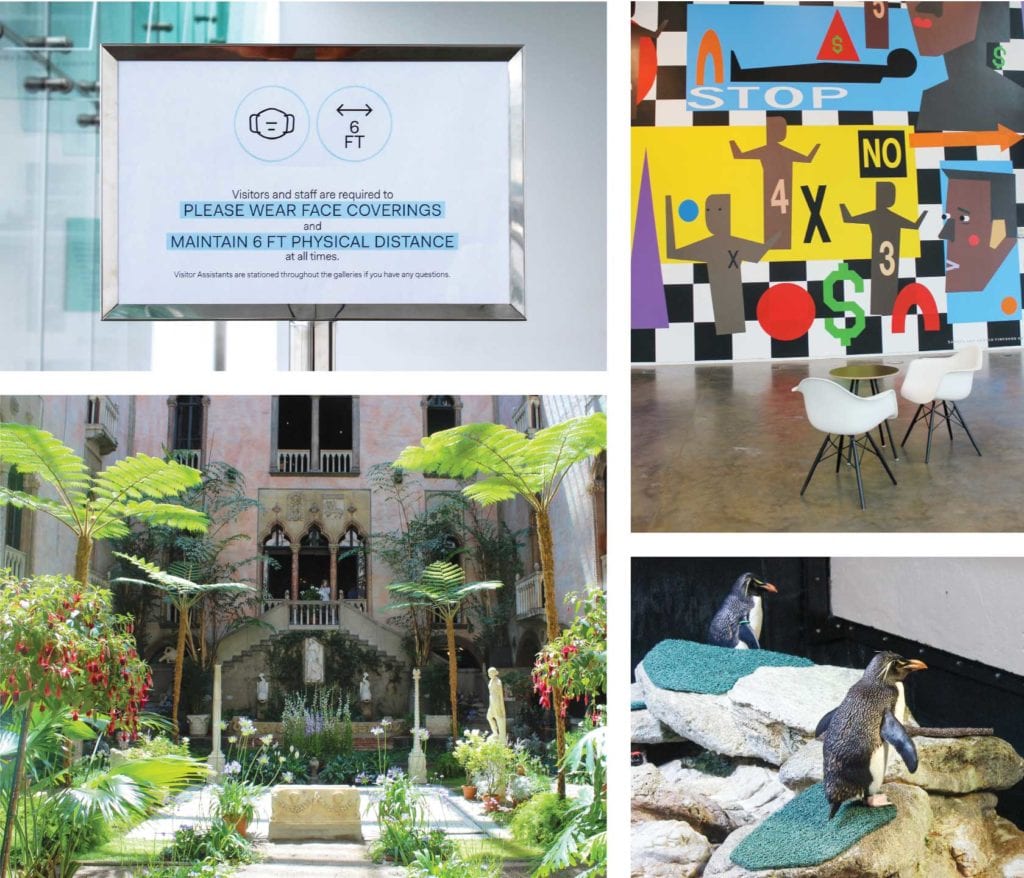The new museum experience
Museums and attractions reopen with safety precautions and a more private feel

Several attractions and museums around Boston opened last week with safety precautions in place to protect staff and visitors during COVID-19. Measures like timed-entry ticketing, hand sanitizer stations, one-way passages and required masks are molding the new museum experience.
At the New England Aquarium, the facility is operating at 14% capacity, significantly lower than the state-mandated 40% limit. The entire indoor experience is now on a one-way path and advance tickets must be purchased for a specific entry time. Hand sanitizer units are stationed around the space and masks are required while in the museum.
According to Dr. Leigh Clayton, vice president of animal care, the staff has maintained as much of a normal schedule for the animals as possible. “Our visitor numbers initially are going to be so low that we’re not going to have those louder time periods that would be normal of a summer day,” she says. “We’re doing a slow ramp up from the animals’ perspective as well.” The staff has been playing crowd noises near the penguins to acclimate them back to having larger numbers of people around.
At museums like the Isabella Stewart Gardner Museum and the ICA Boston, similar safety measures are being taken. Masks are required, timed-entry tickets must be purchased in advance, some passages are one-way and hand sanitizer is plentiful. Still, there is no replacement for an in-person art experience. Though these safety measures limit the number of people who can access the artworks each day and alter the experience, an in-person museum visit provides what a virtual tour never could.
“I’m equally eager to simply see our audiences — to be alone together at the museum — as we navigate our way together, invest in the common good and recognize the power of the arts to help us understand the promise and the pain of our moment,” says Jill Medvedow, the Ellen Matilda Poss director of the ICA.
The limited capacity and timed ticketing at these institutions have the wonderful side effect of giving visitors quiet time with the art. Without the crowds of visitors snapping Instagram photos and chatting with friends, there’s an almost meditative quality in the new museum experience. Visitors can find themselves completely alone in a gallery, a near impossibility previously.
In March, the Gardner debuted an audio tour recorded by Anthony Amore, the security director at the museum, taking visitors along the path that the thieves took during the infamous 1990 art theft. The podcast recognizes the 30-year anniversary of that fateful night. Listening to that audio tour, which is available by QR code on smartphones for safety, takes on a whole new feeling in a near-empty museum.
The Gardner Museum has also extended “Boston’s Apollo,” the show exploring John Singer Sargent’s relationship with Black model Thomas McKeller, through October 12.
Some institutions, like the Museum of Fine Arts and the Harvard Art Museums, are still closed, leaning into virtual connections and fine-tuning their future plans. For the art institutions that are open, safety is as high a priority as reuniting audiences with their favorite pieces.







